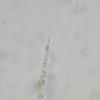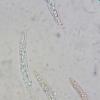
27-11-2025 15:41
Thomas LæssøeSpores brownish, typically 4-celled; 26.8 x 2.4;

27-11-2025 12:01
Thomas Læssøehttps://svampe.databasen.org/observations/10496727

27-11-2025 11:46
Thomas Læssøehttps://svampe.databasen.org/observations/10493918

27-11-2025 11:31
Thomas LæssøeCollectors notes: Immersed ascomata, erumpent thro

23-09-2025 13:31
Thomas Læssøehttps://svampe.databasen.org/observations/10534623

25-11-2025 14:24
Thomas Læssøehttps://svampe.databasen.org/observations/10490522

26-11-2025 18:13
The entire run of Mycotaxon is now available throu

25-11-2025 11:03
Mick PeerdemanHi all,One of my earliest microscopy attempts, so
Can anyone help me with this:
On the inside of the bark of Salix .
Perithecia soft black sphaerical with short necks. 0,15 mm wide, superficial, closely packed in groups of 5-6, several of these groups 3-4 cm apart. Ascospores hyaline, 50-60*2 µm, with high oil content, becoming at least 5-septate , maybe more. Asci 75*9 µm, IKL negative. Paraphyses: 100*7-8 µm, septate. No anamorf to be found.
Thank you,
Greet
Interesting collection. Are the perithecia stromatic? If so, you could consider the genus Sillia, e.g. S. ferruginea, which is described in Munk 1957 (another reference, see tab "Artikelen" at https://www.verspreidingsatlas.nl/1147010#). A generic description is given in sleutel (key) A9: see
http://www.mycologen.nl/Ascosleutel/downloads/SleutelA13_v3-1.pdf
Eduard

I suggest you consider the genus Ophioceras, primarily known from aquatic habitats but including some terrestrial species. The apical apparatus of asci is indeed J- but stains with blue ink or Congo red.
A good, if not comprehensive account was given by Shearer et al., Mycologia 91: 145-156. Should be available on Cyberliber.
good luck,
Jacques
Thanks for your advice and help,
@Eduard: I started out in the first place with the key you suggested (great key) and couldn't find a match.There is no stroma, only a dark patch surrounding the peritecia, this being wood stained black.
@Jacques: I made a new picture where I stained the asci with Congo-red. The coloring isn't much but I think it could be considered as a positive reaction. I read the article you suggested but couldn't find a species that matches my measurements. So it'll stay a Ophioceras sp.
Thanks,
Greet





